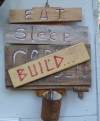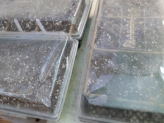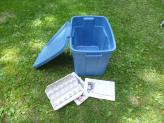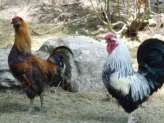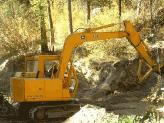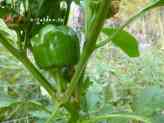- Homesteading
- Growing Ornamental Plants
- What Is Vegetative Propagation?
What Is Vegetative Propagation?
How Is It Better Than Other Ways Of Growing Plants?
I've grown lots of things from seed, but growing them from vegetative propagation adds a whole other dimension to growing plants. Find out What Vegetative Propagation Is here.
So here's the definition of the method of raising more plants using part of the mother plant;
"Vegetative propagation is a type of asexual reproduction in plants where a new plant grows from a vegetative part of the parent plant, such as the roots, stem, or leaves, rather than from seeds or spores.
The new plant is a clone of the parent plant, meaning it is genetically identical, although sports and mutations may form the basis of new cultivars and varieties.
This process can occur both naturally and artificially."
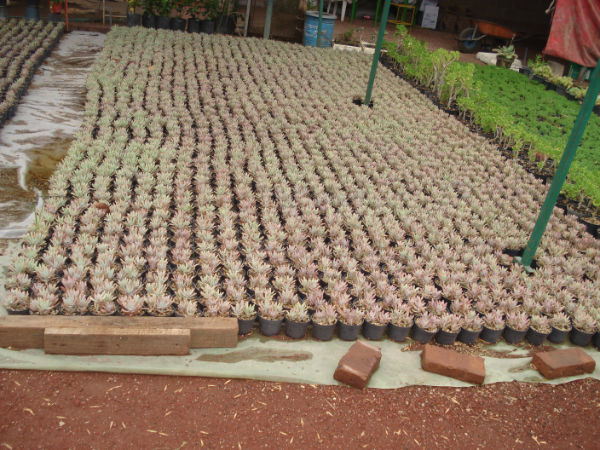 A great production of identical plants, using vegetative propagation
A great production of identical plants, using vegetative propagationNatural Vegetative Propagation
Many plants have developed natural methods for vegetative propagation. Some common examples include:
- Runners:
These are stems that grow horizontally along the ground. At various
points, or nodes, along the runner, new roots and shoots can develop,
forming new plants. Strawberries are a well-known example. These stems are also referred to as 'stolons'.
- Bulbs:
These are underground storage organs with fleshy leaves that store
food. New bulbs can form from the main bulb and grow into new plants.
Onions and tulips propagate in this way.
- Tubers: These are
swollen underground stems or roots that store food. "Eyes" on the tuber
can sprout and grow into new plants. The most common example is the
potato but there are many other plants that follow this method of
propagating themselves.
- Rhizomes: These are modified stems
that grow horizontally underground. New shoots and roots can grow from
the nodes of the rhizome. Ginger and irises are examples of plants that
use rhizomes to propagate.
- Suckers: These are new shoots that
grow from the base of the parent plant. Bananas and raspberries are
examples of plants that produce suckers.
Sometimes cherry and apple trees are grown this way, but often just for the root stock, which is then grafted with the more desirable fruit variety.
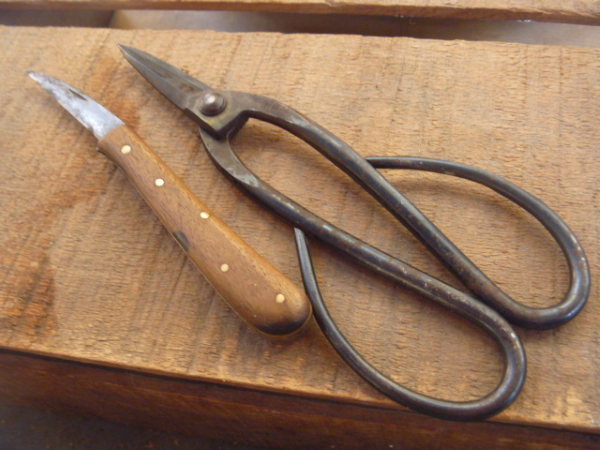 The tools I use for growing plants vegetatively - Tina grafting knife, and bonsai scissors
The tools I use for growing plants vegetatively - Tina grafting knife, and bonsai scissorsArtificial Vegetative Propagation
Humans have developed several techniques to propagate plants vegetatively. These methods are widely used in agriculture and horticulture. Some of these methods include:
- Cutting: A piece of the parent plant's stem or leaf is cut and planted. If the conditions are right, the cutting will develop roots and grow into a new plant. This is a common way to propagate houseplants and shrubs.
- Grafting: A piece of a stem from one plant (the scion) is attached to the root system of another plant (the rootstock). This is often done to combine the desirable characteristics of two different plants, such as the fruit of one and the root system of another.
- Layering: A stem of a parent plant is bent down and covered with soil. The stem will then develop roots, and the new plant can be separated from the parent. This method is used for plants like jasmine and bougainvillea.
- Tissue Culture: This is a more advanced method where small pieces of plant tissue are grown in a sterile laboratory environment on a nutrient medium. This technique can be used to produce a large number of identical plants in a short amount of time. You may see this used in orchid production, and with plants that are not easily grown by other means.
 Producing plants from cuttings is so satisfying, when you see this part of it.
Producing plants from cuttings is so satisfying, when you see this part of it.If you're interested in this topic, you might be a horticulturist. Finding out more about growing plants in different ways is fascinating, and may become a lifelong obsession if you're not careful




